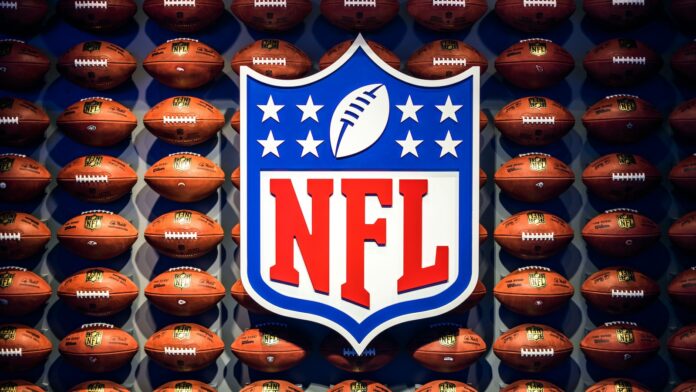
The National Football League (NFL), known for its physical prowess and tactical brilliance, has been augmented by an unlikely dimension – technology. This article explores how technology has improved NFL player safety through data analytics, equipment design, and rule implementation innovations. As the future unfolds, we delve into this tech-sports symbiosis’s prospects and potential challenges.
The Advent of Technology in the NFL
Incorporating technology in the NFL has ushered in an era of transformative changes that have revolutionized the sport. Initially, technology was used to augment the viewing experience for fans with high-definition broadcasts, slow-motion replays, and detailed player statistics. Over time, these innovations began influencing NFL odds, affecting betting markets and leading to dynamic shifts in lines based on the available wealth of data. Technology applications also expanded, including player training, game strategies, injury prevention, and recovery methods. Today, technology influences sports betting and plays an integral role in all facets of the sport, from scouting to gameplay and, most importantly, in player safety.
Technological Innovation and Player Safety
Changes in Scouting Process
The scouting process in the NFL has significantly evolved with the advent of technology. Traditionally, scouts relied on manual evaluations of player performance, often using only video footage and personal notes. However, advanced analytics and digital scouting tools have streamlined this process. Data from college games, combined workouts, and player interviews is now analyzed using machine learning algorithms to generate detailed player profiles. These technological aids allow for more accurate evaluations of a player’s skill, potential, and injury risk, aiding in selecting healthier, more efficient teams.
The Role of Data Analytics in Player Performance
The advent of data analytics in the NFL has revolutionized player performance evaluation. Teams now use player tracking systems, such as the RFID-based Next Gen Stats, to gather precise data about each player’s movements, speed, acceleration, and overall performance on the field. This data allows teams to assess a player’s skills, identify areas for improvement, and even predict potential injury risks. For instance, sudden changes in a player’s speed or movement patterns might indicate an impending injury, allowing for proactive measures to be taken.
The Impact of Innovative Equipment
In the realm of protective gear, technology has sparked significant improvements. Helmets, critical safety equipment, have seen significant technological enhancements. For instance, helmets with liquid-filled layers have been developed to absorb and disperse impact forces, reducing the chances of concussions. Wearable technologies like smartwatches and biometric shirts are also used to monitor players’ vitals in real time, helping to detect anomalies like irregular heart rates or excessive fatigue that could indicate serious health issues.
The New Kickoff Rule
In response to data showing a high rate of concussions during kickoff plays, the NFL introduced a new rule in 2018 to reduce high-speed collisions. The rule changes included eliminating the running start for the kicking team and disallowing blocking in certain areas. Although the rule has faced criticism from those who believe it changes the game dynamics, the NFL projects a decrease in the concussion rate on kickoffs by 15 percent due to this rule change.
The Perception of the NFL’s Focus on Player Safety
Despite the NFL’s steps to improve player safety, critics argue that the league could do more. Some feel the league’s efforts are more about improving public perception than genuine concern for player wellbeing. However, it’s crucial to acknowledge the NFL’s substantial efforts in embracing technology and implementing new rules designed to improve player safety.
The Future of Technology in the NFL
As technology continues to evolve, its application in the NFL is set to expand. Future advancements might include using virtual reality for safer training practices, integrating AI for injury prediction, and developing even more advanced protective equipment. This could create a more data-driven, precise, and safer player environment.
The Risks and Challenges
Dealing with Injuries
Despite technological advancements in protective gear and injury prediction models, injuries remain a significant concern in the physically demanding NFL. Technology provides substantial benefits, such as data analytics that reveal insights into player behaviors leading to injuries, but it can’t eliminate the risks. Moreover, technology could unintentionally create a false sense of security, leading players to take greater risks on the field. Addressing injuries effectively requires more than just technology; it demands a multi-faceted approach encompassing education on safe play, sufficient recovery time for players, enforcing safety rules, and fostering a culture prioritizing player safety.
Technology – A Panacea or a Double-edged Sword
Technology has significantly improved player safety in the NFL, but it has drawbacks. Each new technological advancement or rule change brings potential benefits and risks. For instance, while the new kickoff rule aims to reduce concussions by minimizing high-speed collisions, critics suggest it might have shifted the risks to other types of injuries. There’s also the risk of over-reliance on technology, potentially overlooking crucial human factors such as player intuition and experience. Thus, NFL stakeholders must scrutinize every technological innovation and rule change, ensuring continuous monitoring, evaluation, and open dialogue with all parties involved. Technology should be seen as a helpful tool but not the only solution to ensuring player safety.
Conclusion
Technology has significantly impacted the NFL, particularly in improving player safety. However, as with any transformative force, it introduces new opportunities and challenges. As the NFL continues to adopt advanced technology, it must balance the potential benefits with the risks, ensuring that the drive for innovation does not compromise the objective it seeks to enhance – player safety.










